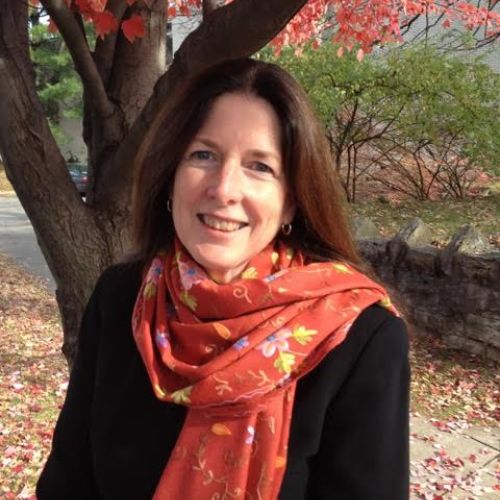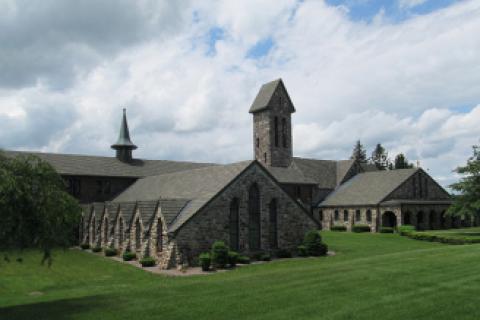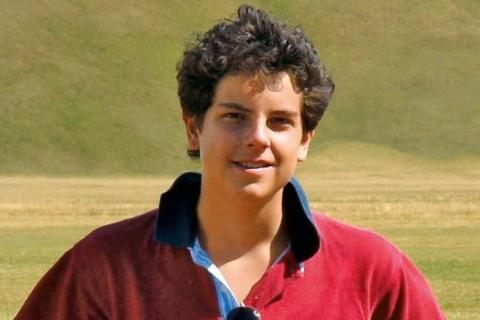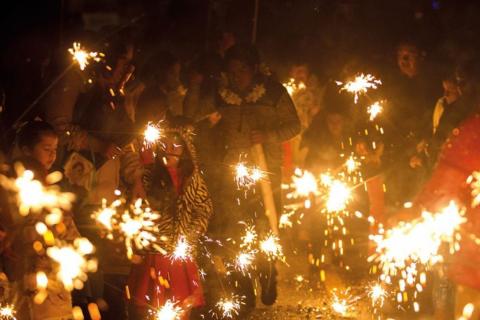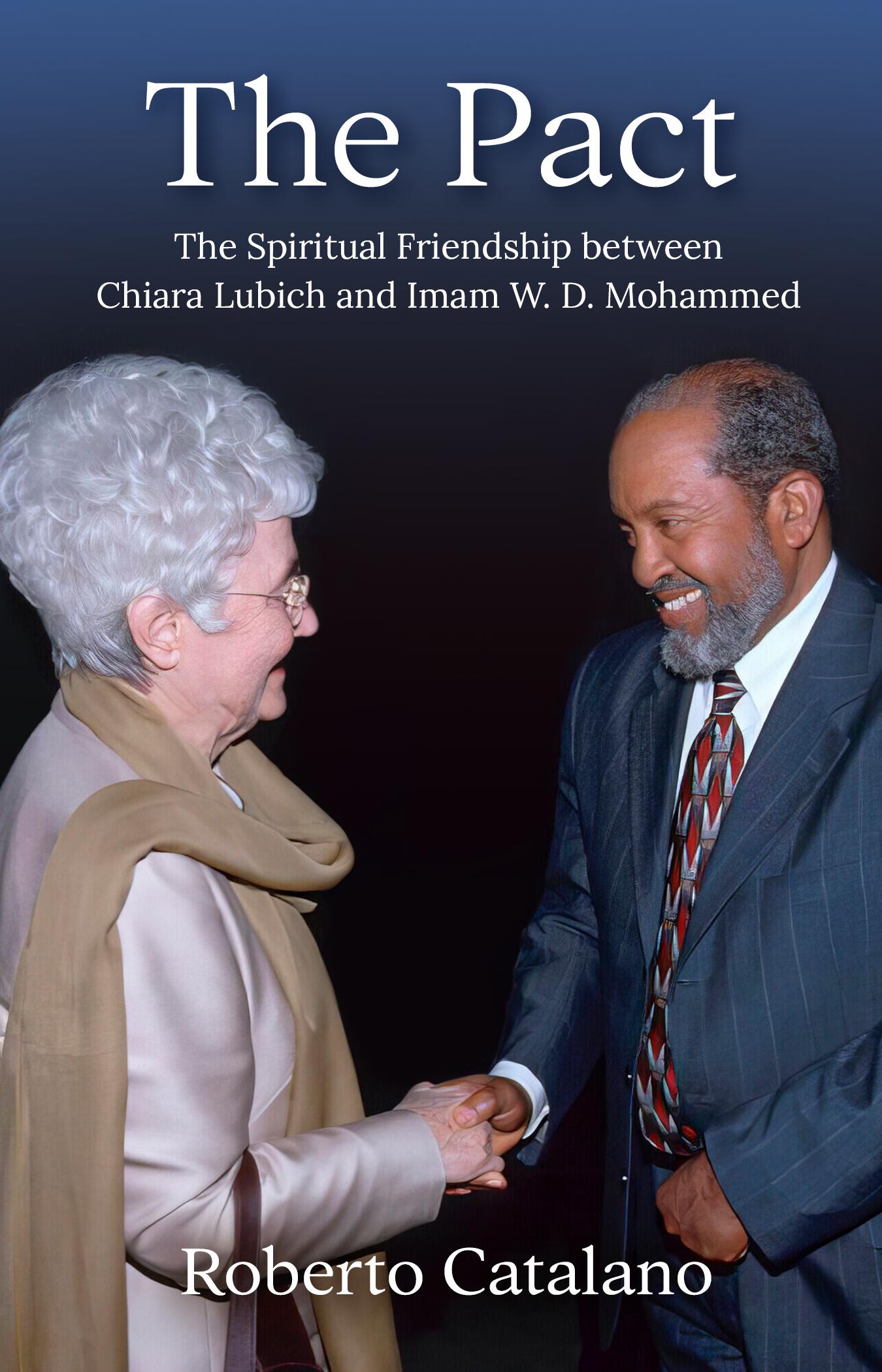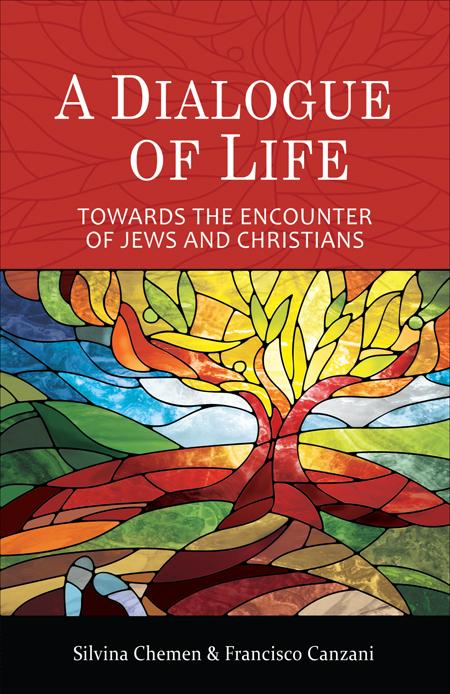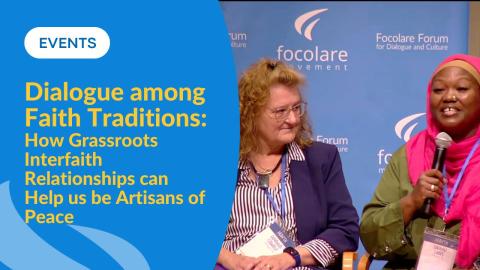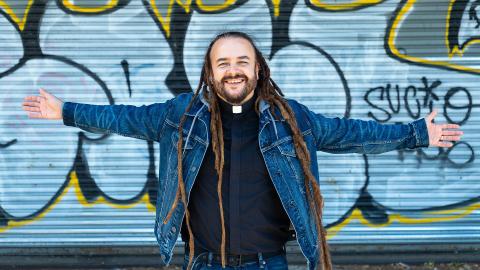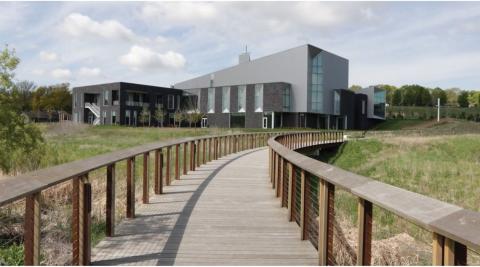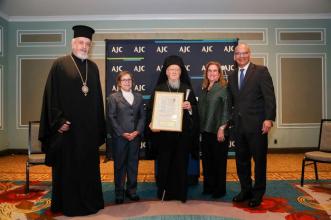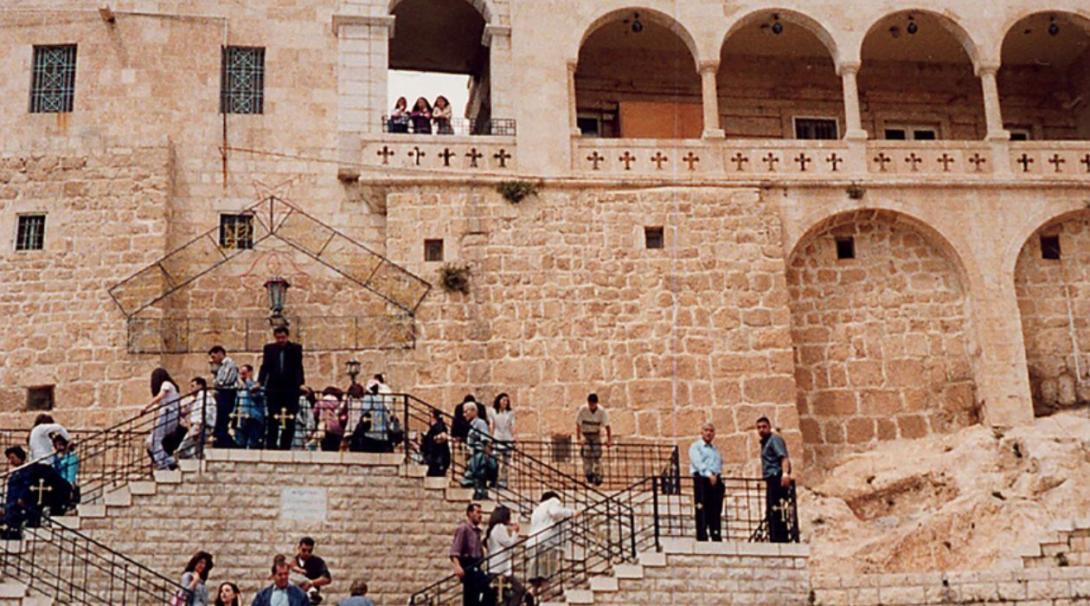
Photo by Soman | commons.wikimedia.org
It is said that Beloved Mary journeyed a while with John, beloved disciple to whom she had been entrusted in mutual care. En route to Ephesus, they may well have passed through Damascus, where 500 years later Emperor Justinian so strongly experienced her presence.
When visiting a dear friend in Damascus some years ago, we were encouraged to visit Saydnaya (“Our Lady”), a town nearby, where a beautiful Orthodox Christian convent, originally built by Justinian, continually welcomes multitudes of Christians and Muslims who come to honor the Virgin Mary and to receive healing there, offering gratitude in abundant prayer. On the northern outskirts of Damascus, Syria, this community is one of the few in the world where Aramaic is still spoken, amid the Arabic.
It was around 547 CE that the Monastery of “Our Lady” was established by Justinian I. He was leading his army through the region and had encamped in the Syrian desert but soon ran out of water; they were growing quite distressed with thirst. Suddenly, the emperor caught sight of a deer and chased after it. When the deer seemed nearly exhausted, it halted atop a rocky mound, revealing nearby a spring of clear, fresh water.
The deer then transformed into an icon of Beloved Mary radiating Light, and Justinian heard her voice saying, “Build a church for me here on this hill.” Immediately, he ordered a church to be designed, but the royal engineers couldn’t agree on how to construct it there. Finally, one night, the emperor had a dream in which he saw the deer and the Virgin once again, and she inspired in him a beautiful design which he then had built upon the hill—the Monastery of Our Lady still stands there. Though damaged during the recent war in Syria, it is being rebuilt, one of the most ancient monasteries in the world.
Within its inner sanctum abide many early icons, including an early replica of the icon of “Our Blessed Lady” by St. Luke, known as Shagoura in Syriac, Shahira in Arabic, an icon that, it is said, was brought from Jerusalem to Saydnaya by a Greek at the time of Theodore, in the eighth century CE.
Women of all faiths visit there to pray for the blessing of conception. The icon of Beloved Mary is hidden behind a silver filigree grill in the Orthodox convent chapel, which is always lit with numerous candles and oil lamps suspended from the ceiling. Since medieval times, the icon has been known to ooze a healing oil, long treasured for its healing capacities by Muslims as well as Christians, and even in earlier eras, by Jews.
When our daughter was young, she continually had painful ear infections; nothing really seemed to help. My husband Kabir and I visited the blessed chapel of Our Lady with a friend from Damascus. We, too, as others, removed our shoes upon entering—even as it is also a practice in Islam before one enters a mosque.
This practice of Moses before the Presence of God is remembered with a verse of Exodus gracing the doorway there: “Put off your shoes from your feet, for the place whereon you stand is holy ground.”
The prophet or saint drawn near sees with the Light of God, even as was Muhammad’s experience in his Miraj, when the Prophet rose through the heavens until he neared the Divine Throne (where Angel Gabriel could no longer accompany him), into the Presence of God.
The nuns offered us a little packet with a piece of cotton soaked with the healing oil, their gift of remembrance to pilgrims. We offered a prayer and brought back some of this healing oil for our daughter. I told her about Saydnaya, this sanctuary of Beloved Mary—with whom she has always had a special connection—and gently swabbed her ears with the oil. The ear problem abated and did not return.
It was the Feast of Beloved Mary’s Nativity, September 8, that Justinian dedicated the completed convent. Since then, Christians, and soon thereafter, Muslim pilgrims as well, have continually arrived at the monastery to honor Our Lady of Saydnaya. For centuries now it has been a place of healing through the heart of her grace and the healing power of God, a place where both Christians and Muslims visit to offer prayers throughout the year. For Eastern Orthodox Christians, a pilgrimage there, considered the second most holy site of their faith, is honored in importance second only to a pilgrimage to Jerusalem.
Countless offerings displayed on the walls attest to the many miracles of healing with which her faithful visitors, both men and women, have been blessed, when they have been called to be present there in prayer.
The call of God, whether it is veiled or unveiled, bestows that which He bestowed on Mary from His heart. (Rumi, Mathnawi I: 1934)
Rumi refers here to a famous Hadith Qudsi (a saying of God conveyed through the Prophet Muhammad external to the Quran). God says, “When my faithful servant draws near to Me through his or her voluntary devotions, then I love him/her and I become the ear with which he or she hears, the eye with which he or she sees, the tongue with which he or she speaks, the hand with which he or she grasps, the foot with which he or she walks.”
The prophet or saint drawn near sees with the Light of God, even as was Muhammad’s experience in his Miraj, when the Prophet rose through the heavens until he neared the Divine Throne (where Angel Gabriel could no longer accompany him), into the Presence of God:
His heart didn’t contradict what he saw…
The eye did not waver, nor yet did it stray:
Truly did he see some of the most profound
of his Sustainer’s symbols. (Quran 53:11, 17–18)
In such moments of deep immersion with Spirit, the light is known as brilliant, and in that brilliance the individual “face” disappears. “Everything is perishing except the Face of God” (Quran 28:88). Out of respect for that immersion in Spirit, and the major tenet of Islam attesting to the Oneness of God, Islamic artists avoid rendering the face of the Prophet Muhammad. The Light shines forth.


